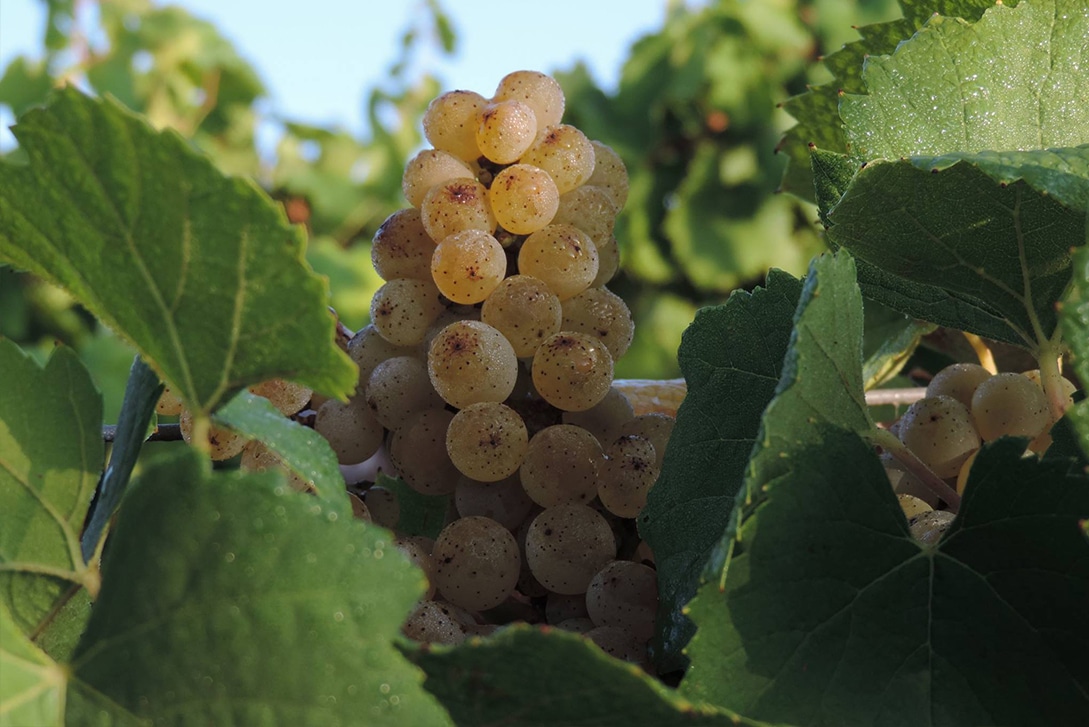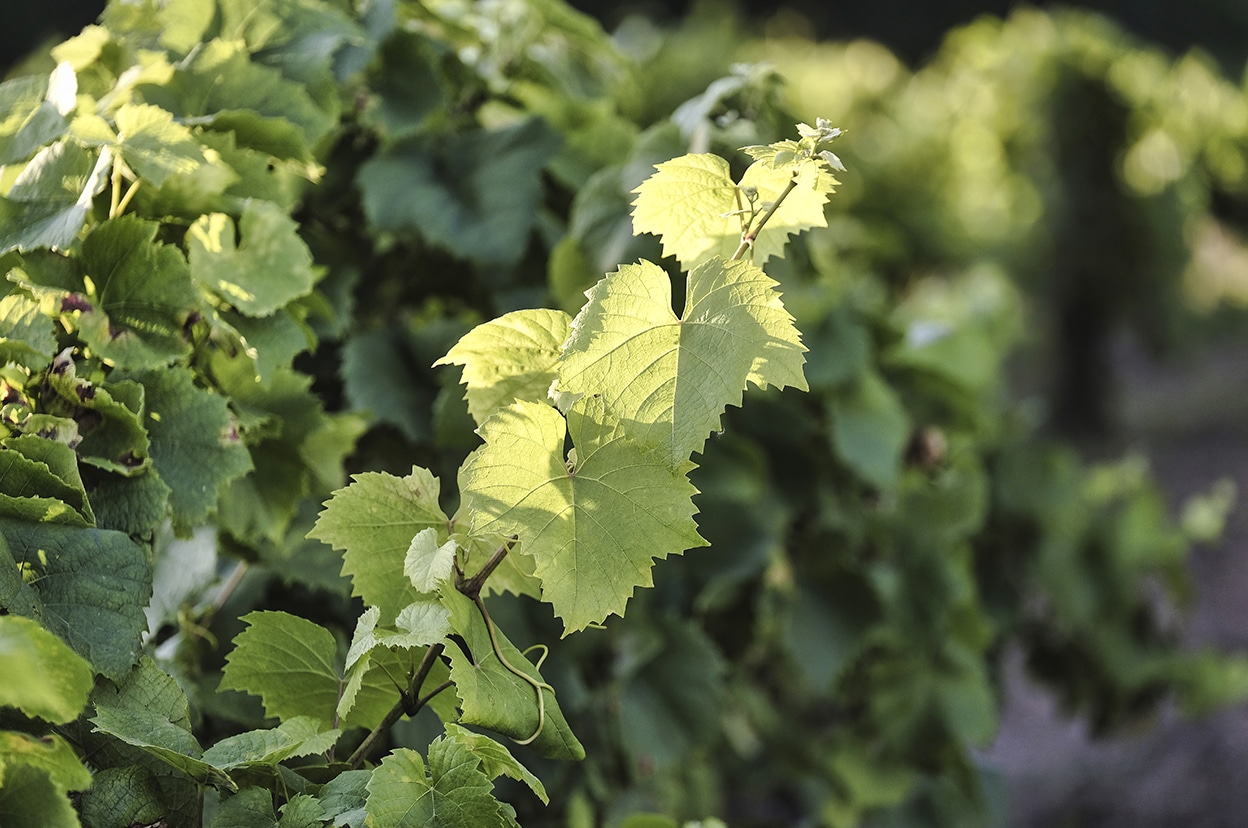Melon de Bourgogne, the grape variety of Muscadet
The origins of Melon de Bourgogne
At the estate, we have changed nothing since the beginning. We grow only one variety, one that has our almost devout dedication.
This variety is Melon de Bourgogne. As the name suggests, its origins are in Burgundy: in the Côte de Beaune, to be precise. Although it has now been replaced by Chardonnay, Melon was once the
supreme variety in white Burgundy wine production. Melon de Bourgogne is the result of a cross between Pinot Noir (which confirms its Burgundian origins) and a variety that has since vanished:
Gouais Blanc. Highly nuanced and delicate, it is considered to be very revealing of its terroir.
Following a series of exchanges between the abbeys in Cîteaux and the Loire, this famous variety was quickly planted throughout the Nantes region.


The history of Melon de Bourgogne in the Nantes region
Following a series of exchanges between the abbeys in Cîteaux and Loire, this famous variety was quickly planted throughout the Nantes region.
According to the Rennes archives, it was in 1616 that the first evidence of Melon de Bourgogne can be found in the Nantes region. In our vineyard plot in the Avineaux, to be precise, known at the time as the Navineaux. The document that attests to it is none other than a declaration of a lease contract between Suzanne de Beaucé and Louis Ménard.
WhyMelon de Bourgogne
The organoleptic qualities of our metamorphic soils come through very easily with this variety, and its resistance to the winter frost also works in its favour. After phylloxera, it was planted in large quantities as it is the only variety authorised in AOC Muscadet.
Today, it is produced almost exclusively in the region of Nantes. Rarely, it has also been planted in southern California, Oregon, and Ontario, and it still remains in Burgundy in smaller quantities.